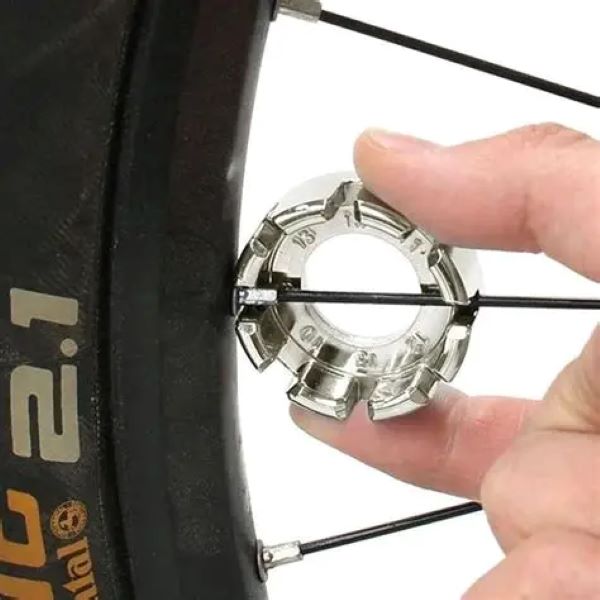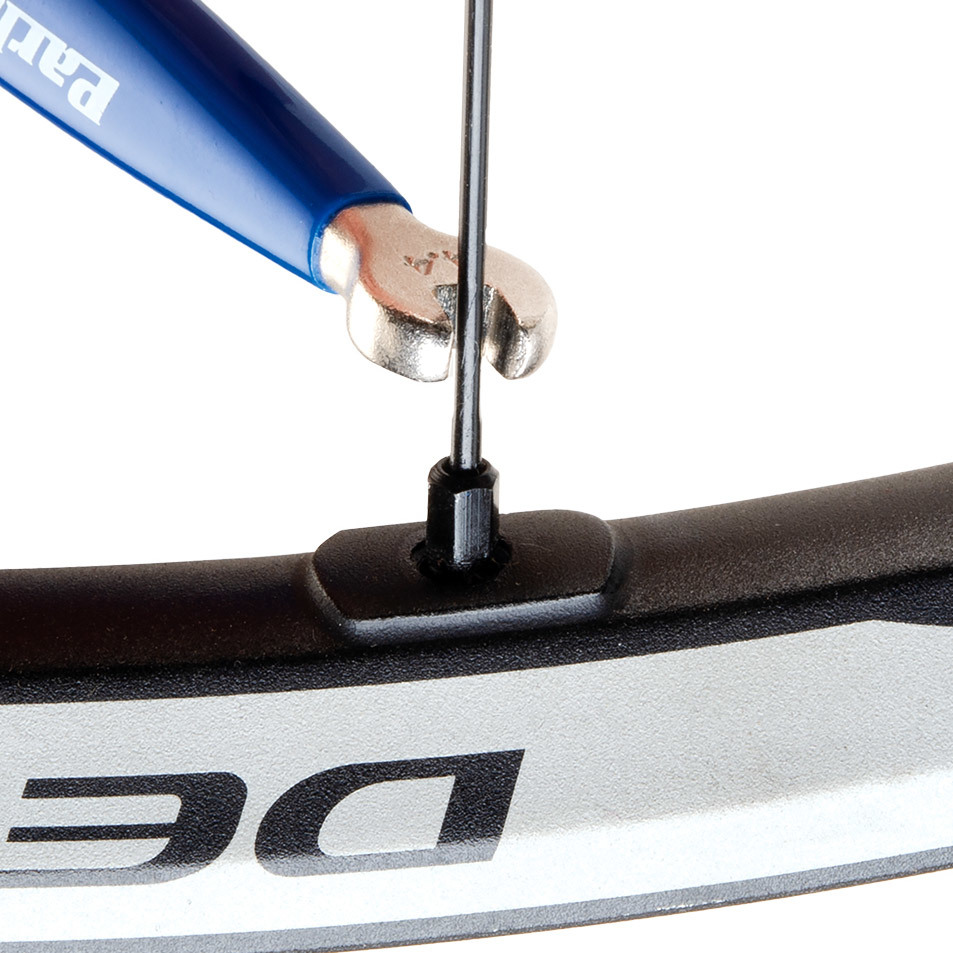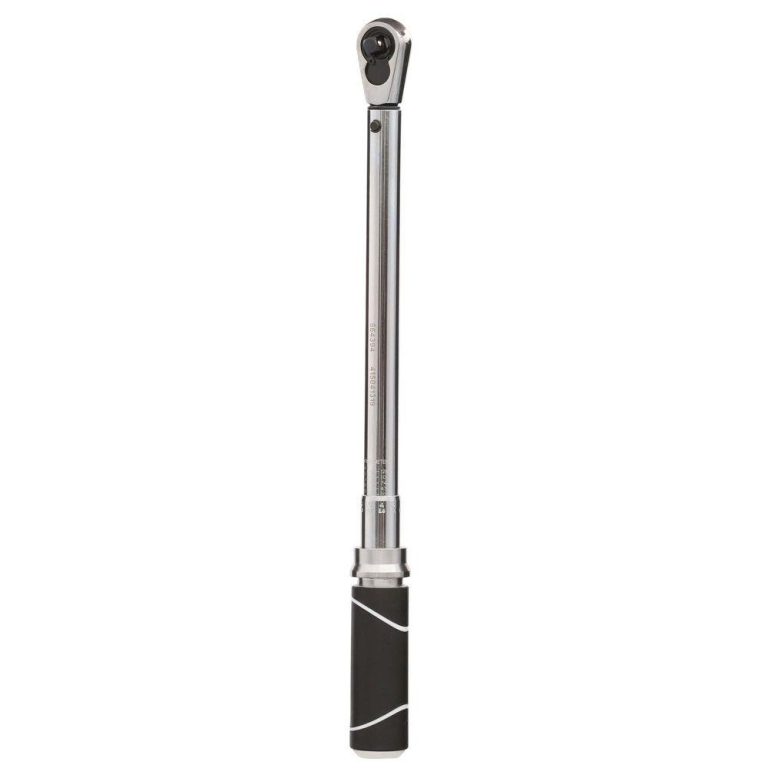
Why Every Cyclist Needs a Reliable Spoke Wrench in Their Toolkit
A spoke wrench is a small but vital tool in any cyclist’s toolkit. It allows precise adjustment of spoke tension, which keeps wheels true, strong, and reliable. Without proper tension, wheels wobble, weaken, or fail under stress. That’s why every serious rider, mechanic, or DIY bike enthusiast needs a quality spoke wrench.
Moreover, maintaining wheel alignment improves ride quality. A true wheel rolls smoothly and handles better. It also reduces wear on tires and hubs. Regular truing with a spoke wrench extends the life of your entire wheelset.
In addition, different bikes use different spoke nipple sizes. Most common are 3.2mm, 3.45mm, and 3.96mm. A good spoke wrench fits these precisely to prevent rounding off the edges.
Furthermore, portable models fit into repair kits. Cyclists carry them on long rides for emergency fixes. Trailside adjustments restore stability after rough terrain.
Consequently, spoke wrenches come in various styles. Some are simple flat bars. Others feature folding designs or multi-tool integration. Each serves a specific need.
Also, material matters. Chrome vanadium steel offers durability. Polished finishes resist rust and improve grip.
Ultimately, using a spoke wrench is not just for pros. Any rider who values safety and performance benefits from learning this skill.
 What is a Spoke Wrench?
What is a Spoke Wrench?
A spoke wrench is a tool made for adjusting bike spokes. It is used to tighten or loosen spokes to maintain wheel balance and ensure smooth rides. Spokes connect the wheel rim to the hub and play a critical role in the bike’s structure and performance.
Spoke wrenches are specifically designed to fit the spoke nipples, which are the small pieces at the end of spokes. These nipples connect the spokes to the wheel rim. The wrench’s shape allows a precise grip on the nipple for accurate adjustments.
Using a spoke wrench helps keep the wheel true, which is essential for stability. A trued wheel spins without wobbles and ensures a safe ride. Riders and professionals rely on spoke wrenches for regular bike maintenance and repair.
There are various types of spoke wrenches available. Some are simple and fit standard nipple sizes, while others are versatile and fit multiple sizes. Professional spoke wrenches offer durability and precision for more advanced users.
Understanding a spoke wrench and its functions is vital for maintaining your bike. This tool is small but indispensable for ensuring optimal bike performance and safety.
Importance in Bike Maintenance
Spoke wrenches are crucial for maintaining your bike’s wheels and ensuring safe, smooth rides. Regular use keeps wheels balanced and prevents issues like uneven wear or wobbling. Maintaining wheel stability is important for both performance and safety.
Key Reasons Why Spoke Wrenches are Important
- Keeps the Wheels True: A properly trued wheel spins straight without wobbling. This ensures stability and improves riding comfort.
- Prevents Long-term Damage: Loose or overly tight spokes can cause uneven stress on the wheel. Over time, this can damage rims or spokes, leading to costly repairs.
- Improves Bike Performance: Balanced wheels allow efficient power transmission, making your ride smoother and more enjoyable.
- Enhances Safety on the Road: Unbalanced wheels can make riding unpredictable, especially at high speeds or rough trails. Regular adjustments ensure your bike remains safe.
- Supports Easier Maintenance: A spoke wrench simplifies adjusting spokes to the needed tension. This reduces the effort required for regular bike care.
Why Regular Maintenance is Necessary
For riders who cycle frequently or on rugged terrains, checking the spokes with a spoke wrench is essential. Regular maintenance prevents unexpected issues and extends the lifespan of your bike wheels. Whether you’re a casual cyclist or a professional, a spoke wrench is vital for optimal bike care.
 Types
Types
Understanding the different types of spoke wrenches is vital for proper bike maintenance. Each type serves specific needs and caters to varying skill levels and bike requirements.
Standard Spoke Wrenches
Standard spoke wrenches are designed for simple use and fit common spoke nipple sizes. They are ideal for casual cyclists or beginners who need occasional adjustments. These wrenches are compact and easy to carry during rides. Their straightforward design makes them suitable for quick fixes but may lack versatility. While cost-effective, these wrenches might not be as durable as advanced options.
Multi-size Spoke Wrenches
Multi-size spoke wrenches are versatile tools that fit multiple nipple sizes. They are perfect for individuals who own bikes with varying specifications or for professionals dealing with different bikes. These wrenches typically feature a unique design with multiple slots or adjustable heads. The versatility ensures you won’t need multiple tools for different spoke sizes. While they offer more flexibility, the design can be slightly bulkier than standard wrenches.
Professional Spoke Wrenches
Professional spoke wrenches are built for durability and precision. They cater to advanced users who frequently maintain or repair their bikes. These wrenches are often made from high-quality materials such as steel and are ergonomically designed for long-term use. They provide an excellent grip and allow more precise adjustments. Though they are more expensive, the quality and efficiency make them worth the cost for serious cyclists or bike mechanics.
Choosing the right type of spoke wrench depends on your specific needs. Consider the frequency of use, your level of expertise, and the variety of bikes in your collection. Investing in the right spoke wrench ensures better bike maintenance and a smoother riding experience.
How to Choose the Right Spoke Wrench
Choosing the right spoke wrench is essential for proper bike wheel maintenance. The correct tool ensures safe, efficient, and precise spoke adjustments. Here are some critical factors to consider:
Compatibility with Your Bike’s Spokes
- Check Spoke Nipple Size: Ensure the spoke wrench fits your bike’s spoke nipples. Different wheels use different sizes.
- Match the Tool to Your Wheel Type: Verify if your wheel design requires a specialized or unique spoke wrench.
- Test Fit Before Buying: If possible, test the spoke wrench on your bike nipples to confirm compatibility.
- Consider Multi-size Options: If you have multiple bikes, choose a multi-size wrench for versatility.
Compatibility ensures the wrench fits snugly over the nipples, preventing slipping and damage.
Material and Build Quality
- Pick Durable Materials: Look for spoke wrenches made of high-quality steel or alloy.
- Avoid Cheap Plastics: Weak materials may deform or wear out easily under pressure.
- Corrosion Resistance: Choose rust-resistant options for long-lasting performance in different weather conditions.
- Evaluate Build Strength: Higher-quality tools withstand frequent use without losing efficiency.
A durable and well-built spoke wrench ensures reliability during regular bike maintenance.
Ergonomics and Ease of Use
- Comfortable Grip: Look for a wrench with a smooth, ergonomic handle for long usage.
- Compact Design: Choose a tool that is easy to carry while riding.
- Ease of Access: Ensure the wrench easily reaches tight spots on your bike’s wheel.
- Precision Design: A precise fit simplifies adjustments, making maintenance faster and safer.
Prioritizing ergonomics improves the user experience and reduces hand strain during extended use.
Considering these factors will help you select the best spoke wrench for your bike maintenance needs. A properly chosen wrench makes adjustments easier, faster, and more effective.
 Step-by-Step Guide to Use
Step-by-Step Guide to Use
Learning how to use a spoke wrench is essential for proper wheel maintenance. Follow this step-by-step guide to safely adjust your bike’s spokes.
1. Inspect the Wheel Condition
- Check for wobbles or uneven spinning while turning the wheel.
- Look for broken or overly loose spokes.
- Identify areas that need adjustment to maintain balance.
2. Identify the Correct Spoke
- Spin the wheel slowly to locate misaligned sections.
- Spot the spokes connected to that area using visual markers.
- Ensure you focus on one spoke at a time for accuracy.
3. Fit the Spoke Wrench
- Select a spoke wrench that matches your spoke nipple size.
- Slide the wrench onto the nipple, ensuring a snug fit.
- Avoid forcing the wrench to prevent damage to the nipple.
4. Adjust Spoke Tension
- Turn the wrench clockwise to tighten the spoke.
- Turn counterclockwise to loosen it.
- Make small adjustments, about 1/4 turn, and check the result regularly.
5. Check Wheel Alignment
- Use a truing stand or your bike’s frame to assess alignment.
- Spin the wheel after each adjustment to ensure it runs straight.
- Repeat adjustments until the wheel is properly balanced.
6. Avoid Over-tightening
- Tightened spokes should be firm but not over-stressed.
- Over-tightening can damage the rim or spokes.
- Ensure all spokes have even tension.
7. Test Your Work
- Take the bike for a short trial ride.
- Notice any unusual vibrations or wobbling.
- Reinspect and fine-tune if needed.
Proper use of a spoke wrench ensures your wheel remains true and improves your bike’s safety. Following these steps regularly keeps your bike performing its best.
Common Mistakes
Using a spoke wrench improperly can damage your bike or its wheels. Learn what to avoid for effective maintenance.
1. Using the Wrong Size Wrench
- A wrench that doesn’t fit can strip the spoke nipples.
- Always match the wrench size to your spoke nipples.
- Test the fit before making adjustments.
2. Over-tightening the Spokes
- Tightening too much can cause spokes or the rim to break.
- Adjust spokes in small increments to avoid over-stress.
- Ensure even tension across all spokes.
3. Uneven Adjustments
- Focusing on one spoke without balancing the others leads to uneven tension.
- Adjust multiple spokes in the affected area for proper balance.
4. Ignoring Wheel Alignment
- Adjusting spokes without checking alignment results in wobbly wheels.
- Use a truing stand or your bike frame to verify alignment.
5. Neglecting Regular Checks
- Rarely inspecting the spokes can lead to long-term damage.
- Regularly check for loose, damaged, or overly tight spokes.
6. Using Worn or Low-Quality Wrenches
- Inferior tools slip and damage spokes.
- Invest in a high-quality spoke wrench for better grip and durability.
7. Rushing the Process
- Quick adjustments can cause mistakes or damage.
- Work slowly and carefully to ensure precise results.
Avoiding these common mistakes ensures effective adjustments and extends the life of your bike wheels.
 Maintenance Tips
Maintenance Tips
Proper maintenance ensures your spoke wrench stays reliable and effective. Regular care prevents damage and extends its life.
1. Clean Your Spoke Wrench After Use
- Remove dirt or debris using a soft cloth.
- Avoid harsh chemicals that can degrade materials.
- Keep it dry to prevent rust.
2. Store in a Safe Place
- Keep the wrench in a toolbox or protective case.
- Avoid exposing it to extreme temperatures.
- Ensure it doesn’t come into contact with water or moisture.
3. Lubricate Moving Parts
- Apply light oil to any adjustable parts for smoother use.
- Wipe excess lubricant with a cloth.
- Perform this step every few months.
4. Inspect for Damage Regularly
- Check for bending, cracks, or wear.
- Test the grip for loosening or slipping issues.
- Replace worn-out wrenches to avoid damaging your bike.
5. Avoid Overusing
- Use the wrench only for bike spoke adjustments.
- Prevent misuse with other tools or materials.
- Overuse can reduce its durability and efficiency.
6. Sharpen Edges If Necessary
- If slots lose shape, consider sharpening edges professionally.
- Ensure it fits nipples snugly after sharpening.
7. Use Quality Tools With Your Wrench
- Pair your spoke wrench with a quality truing stand.
- Avoid using subpar tools to ensure precision adjustments.
Regular maintenance keeps your spoke wrench functional for years and ensures safe bike care.
Where to Buy Quality Spoke Wrenches
Finding a quality spoke wrench is essential for proper bike maintenance. Here are good places to look:
Local Bike Shops
- Offer a range of spoke wrench types and sizes.
- Staff can provide expert advice on which wrench suits your bike.
- Test the wrench’s compatibility on-site before purchasing.
Sporting Goods Stores
- Often stock reliable spoke wrenches for bike enthusiasts.
- Usually carry products from well-known brands.
- Ideal for getting hands-on with tools before buying.
Online Retailers
- Provide access to an extensive variety of spoke wrenches.
- Offer customer reviews to help with buying decisions.
- Convenient for comparing prices and features.
Specialty Tool Shops
- Focus on high-quality tools, including durable spoke wrenches.
- Great for professional-grade options.
- May offer warranties or return policies.
Direct Manufacturer Websites
- Some brands sell spoke wrenches directly to customers.
- Ensure the authenticity and quality of the product.
- May provide detailed product specifications.
Second-hand Marketplaces
- Affordable option for budget-conscious buyers.
- Inspect the wrench carefully for wear and tear before buying.
Key Tips for Choosing Where to Buy
- Prioritize trusted sellers or stores with good reputations.
- Seek recommendations from fellow cyclists or online communities.
- Look for warranties or guarantees to ensure reliability.
Buying from reputable sources ensures you get a durable tool for efficient bike care.
Frequently Asked Questions
What size spoke wrench do I need?
Most bikes use 3.2mm or 3.45mm. Check your spoke nipples or consult your bike manual. Measure with calipers if unsure.
Can I use pliers instead of a spoke wrench?
No. Pliers damage spoke nipples. Always use a proper spoke wrench for best results.
How often should I true my wheels?
Check monthly if you ride weekly. More frequent truing is needed for off-road or heavy use.
Do all spoke wrenches fit all bikes?
No. Spoke nipple sizes vary. Use the correct size to avoid damage.
Can a spoke wrench fix a bent rim?
It can improve minor bends. Severe damage may require rim replacement.
Are expensive spoke wrenches worth it?
Yes. Higher-quality tools last longer and fit better. They reduce the risk of damage.
Can I true a wheel without a truing stand?
Yes. Use the brake pads as a guide. However, a stand provides greater accuracy.
Should I replace a broken spoke myself?
Yes. Use a spoke wrench to tension the new spoke. Match tension to surrounding ones.
 Summary
Summary
A spoke wrench is more than just a tool. It’s a key to safe, smooth, and efficient cycling. Well-maintained wheels improve handling, reduce wear, and prevent accidents.
From daily commutes to mountain trails, every rider benefits from knowing how to use a spoke wrench. It empowers independence and extends bike life.
Whether you choose a compact folding model or a professional T-handle, owning a spoke wrench is essential.
Indeed, no repair kit is complete without one. A quality spoke wrench ensures your wheels stay strong, true, and ready for any journey.
